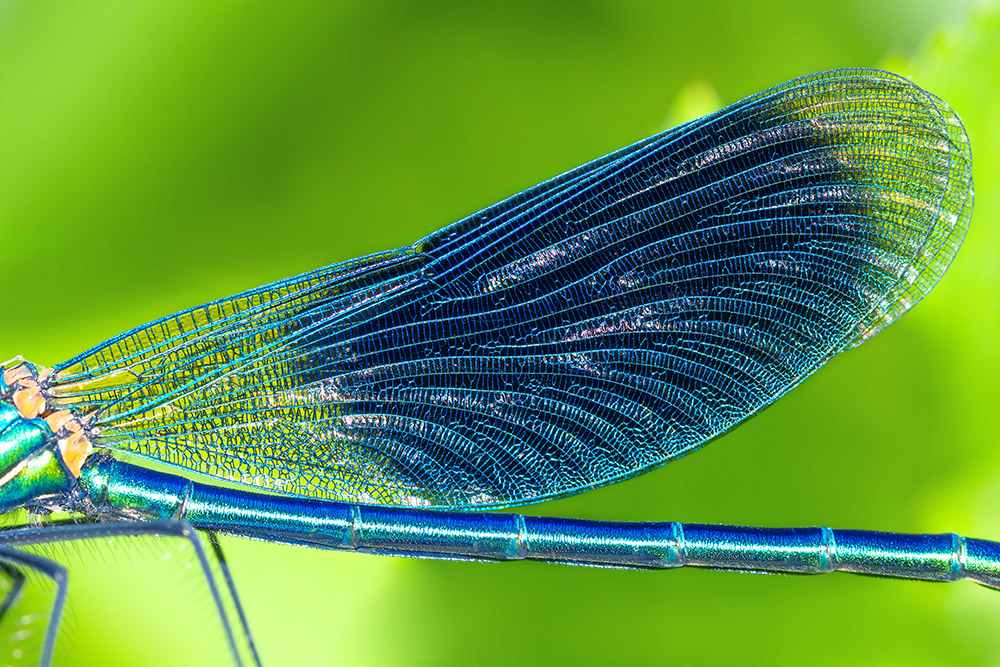

Exciton Science researchers are among the successful applicants for a University of Melbourne ‘Bioinspiration’ grant to fund the development of protective coatings for prosthetic joints, with potential long-term benefits for renewable energy technology.
Joint replacement surgery helps to improve the quality of life for millions of people around the world each year. Yet around two per cent of patients experience complications as a result of bacterial infection during surgery. Bacteria can form biofilms on the surfaces of a prosthetic joint, which shields them from antibiotics.
But nature has developed another way to kill bacteria – using knife-like nanostructures called chitin nanopillar arrays. These nanostructures are found on cicada and dragonfly wings. They evolved as waterproofing and anti-fouling agents and can mechanically rupture and kill bacterial cells.
Inspired by the size, shape and arrangement of these nanostructure arrays, the researchers will optimise the coatings of prosthetic joints to protect against common bacterial pathogens. They will also design ways to add the coatings to prosthetic joints before surgery. This will provide a chemical-free mechanism to prevent infection at the implant site.
Postdoctoral researcher Dr Eser Akinoglu is among the Exciton Science representatives contributing their expertise in nanostructures to the project.
“The bio-inspired part of this is that some insects have the nanostructured surface on their wings, like cicada or dragonflies, with hexagonal pillars forming on their wings,” Eser said.
“What we propose to do is use multiwalled carbon nanotubes which can be grown and mimic the structures that are found in nature. Originally, I had started to work with multiwalled carbon nanotubes in my PhD and I used them as electrodes for the goal of making solar fuels, by coating them with semiconductors.
“[If] we can control the density, length and size of these carbon nanotubes, then we can actually work out what are the structural, geometric parameters needed to effectively kill the pathogens that harm these orthopaedic implants or colonise on them.”
Eser is hopeful the skills and knowledge developed in the course of the Bioinspiration project will prove to be transferable to renewable energy contexts.
“These pillars, these multiwalled carbon nanotubes, are very good electrical conductors,” he said.
“They are like electrodes. And if you now coat them with a semiconductor, which can harvest light – you can absorb light more efficiently due to the large surface area, create hydrogen, reduce CO2, all that kind of stuff. That’s actually something I want to do as well.”
Exciton Science representatives are involved in several other Bioinspiration projects, with Chief Investigator Dr Wallace Wong researching chemical sensors, while Associate Investigators Professor Ann Roberts and Dr James Hutchison are part of a team looking into nano-optics and materials. Ann is also coordinating an investigation of super-iridescent, strong and beautiful materials inspired by beetles, and James is working with Eser on the nano-knife project.

Postdoctoral researcher Dr Eser Akinoglu
